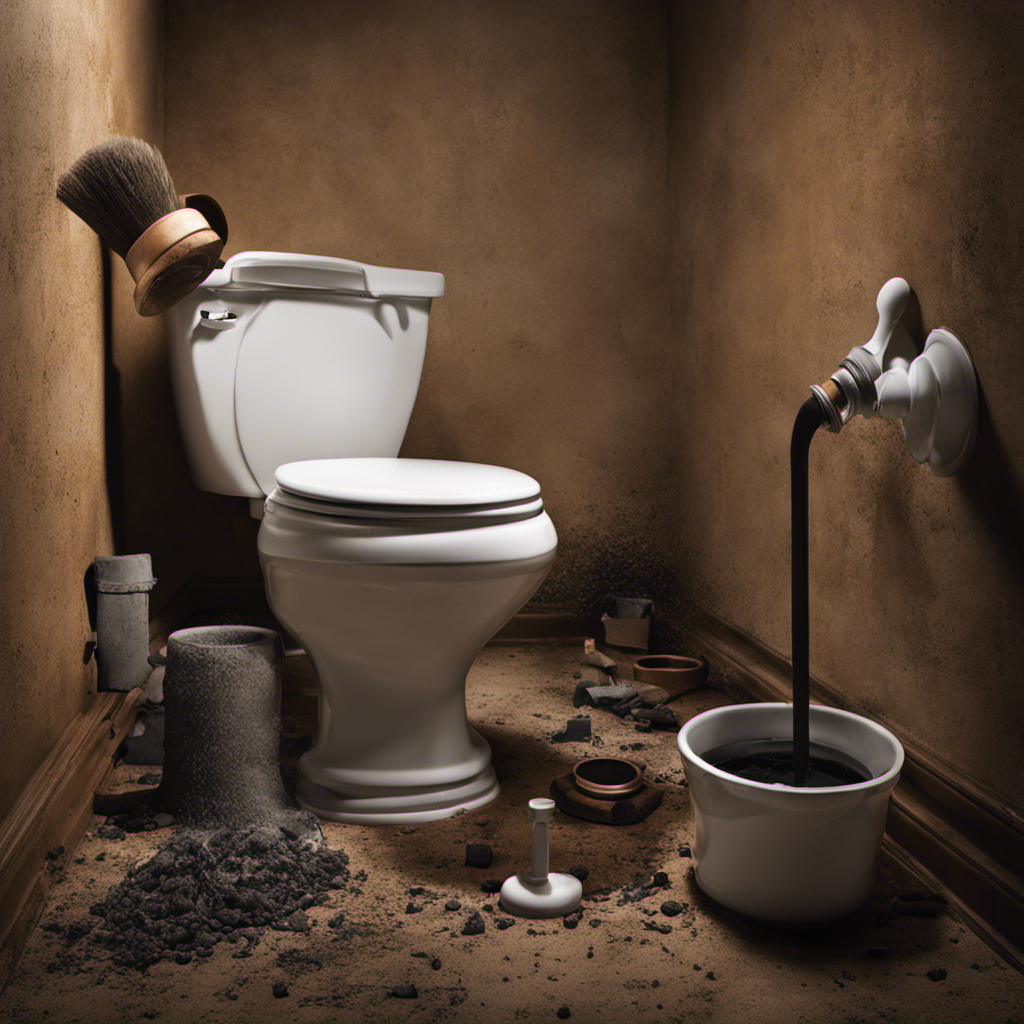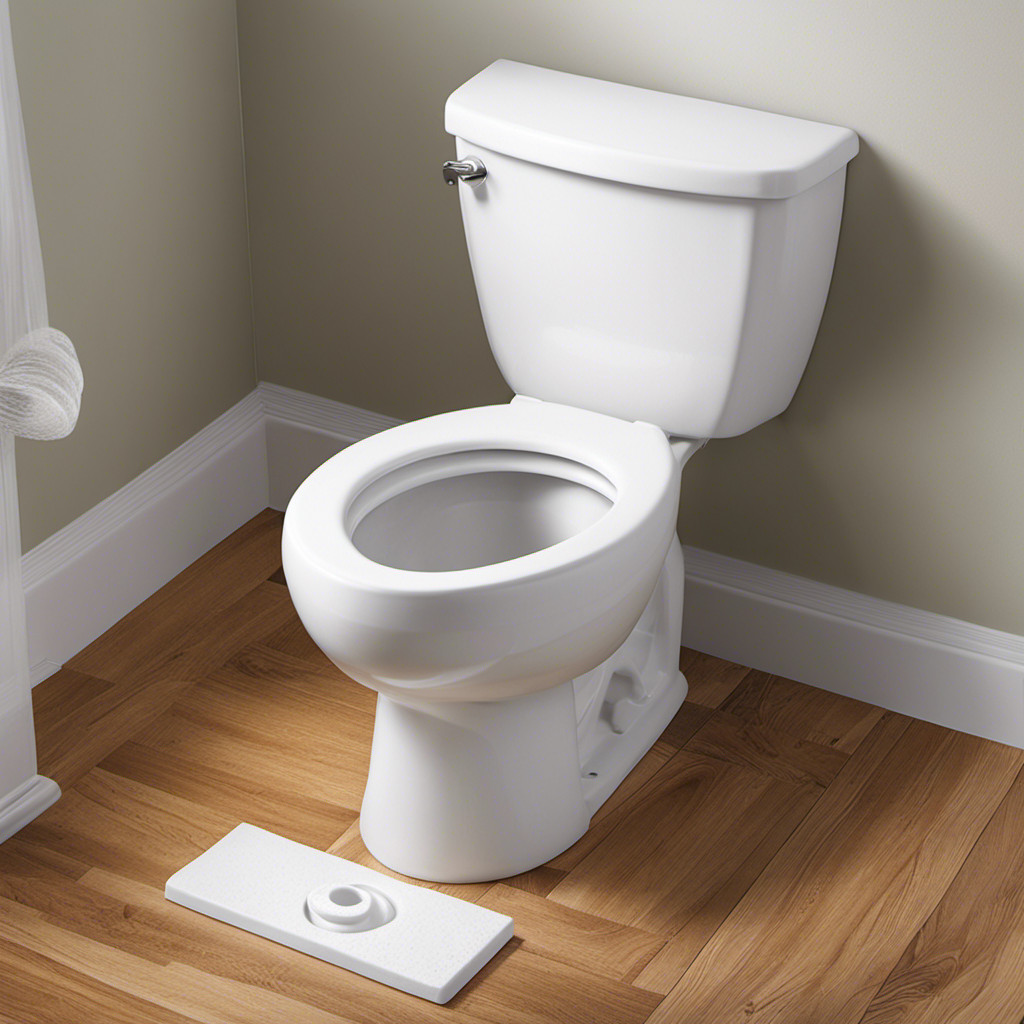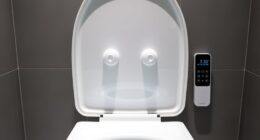Did you know that a stopped up toilet is one of the most common household plumbing issues? In fact, it’s estimated that the average person will experience a clogged toilet at least once a year.
But fear not, because I’m here to guide you through the process of fixing it. With a few simple tools and some know-how, you can have your toilet flowing smoothly again in no time.
So let’s get started on unclogging that stubborn toilet!
Key Takeaways
- Assess the severity of the clog by observing the water level and checking for overflow or leakage
- Gather necessary tools such as a plunger, toilet auger, rubber gloves, bucket, towels, and flashlight
- Use a plunger with firm, steady pressure to create suction and unclog the toilet
- If the plunger fails, try using a toilet auger or snake for more stubborn blockages
Assess the Severity of the Clog
You’ll want to start by determining how severe the clog in your toilet is. Evaluating the clog severity is crucial in troubleshooting toilet blockage effectively.
First, observe the water level in the bowl. Is it filled to the brim or just partially? If it’s filled to the brim, the clog is likely severe and may require more advanced techniques.
Next, try flushing the toilet. If the water doesn’t go down or rises higher, the clog is probably deeper in the pipes.
Lastly, check if there are any signs of overflow or leakage around the base of the toilet. This could indicate a serious blockage that needs immediate attention.
Once you’ve assessed the severity of the clog, you can proceed to gather the necessary tools and materials to fix it.
Gather Necessary Tools and Materials
Before starting, gather the tools and materials needed for the task. Having the right tools and materials is essential for a successful DIY plumbing project, especially when it comes to toilet repair. Here’s a list of what you’ll need:
- A plunger: great for tackling minor clogs.
- A toilet auger: for more stubborn blockages.
- Rubber gloves: to protect your hands from germs and bacteria.
- A bucket and towels: to contain any spills or messes.
- A flashlight: for inspecting the toilet bowl and drain.
With these tools and materials at your disposal, you’ll be well-equipped to tackle any toilet repair job with confidence.
Use a Plunger to Unclog the Toilet
To unclog the toilet, grab the plunger and position it over the drain. Make sure it covers the entire opening for a proper seal. Here are some tips to effectively use a plunger:
-
Use firm, steady pressure: Push down on the plunger handle to create suction, then pull up forcefully to release it. Repeat this motion several times to dislodge the clog.
-
Maintain a tight seal: Keep the plunger in contact with the drain at all times to prevent air from escaping. This will maximize the suction power and increase the chances of success.
-
Be patient: It may take a few attempts before the clog is fully cleared. Don’t rush the process and give the plunger enough time to work its magic.
-
Avoid using excessive force: Pushing too hard or using aggressive motions can damage the toilet or worsen the clog. Use controlled, deliberate movements instead.
Remember, if a plunger doesn’t work, there are alternatives such as using a toilet auger or calling a professional plumber.
Additionally, common mistakes when using a plunger include not creating a proper seal, using too shallow of water, or not plunging with enough force.
Try Using a Toilet Auger or Snake
If the plunger doesn’t work, consider giving a toilet auger or snake a try to unclog the drain. These tools can be a great alternative method to fix a stopped up toilet.
A toilet auger, also known as a closet auger, is a long, flexible rod with a corkscrew-like end. It is specifically designed to remove stubborn clogs from the toilet drain. One of the benefits of using a toilet auger is its ability to reach deeper into the pipes, allowing it to break up and remove tough blockages.
On the other hand, a toilet snake is a flexible wire with a hook on the end, which can be inserted into the toilet drain to dislodge and remove clogs.
Both tools are effective in resolving clogged toilets and are worth considering if the plunger fails to do the job.
Prevent Future Clogs With Proper Toilet Maintenance
Make sure you regularly maintain your toilet to prevent future clogs. Keeping your toilet clean and properly functioning is essential to avoid any inconvenience or costly repairs. Here are four important steps to follow for proper toilet maintenance:
-
Regular cleaning: Clean your toilet bowl and tank at least once a week using a mild cleaner or vinegar and baking soda solution. This will help remove any buildup and prevent clogs.
-
Avoid flushing non-flushable items: Only flush toilet paper and waste down the toilet. Avoid flushing items like wipes, feminine hygiene products, or excessive amounts of toilet paper, as these can easily cause clogs.
-
Check the flush mechanism: Ensure that the flush mechanism is working properly. If you notice any issues, such as weak flushing or incomplete flushing, it may be necessary to replace or adjust the flush valve or flapper.
-
Inspect the water supply line: Regularly check the water supply line for any leaks or damage. A faulty water supply line can cause water pressure issues, leading to poor flushing performance.
Conclusion
In conclusion, fixing a stopped up toilet can be an unpleasant but necessary task. By assessing the severity of the clog and gathering the right tools, such as a plunger or toilet auger, you can effectively unclog the toilet and prevent future clogs with proper maintenance.
Just like a skilled plumber, you can tackle this challenge head-on and ensure the smooth flow of your toilet’s functionality. Remember, with a little know-how and the right tools, you can conquer any clog that comes your way.










